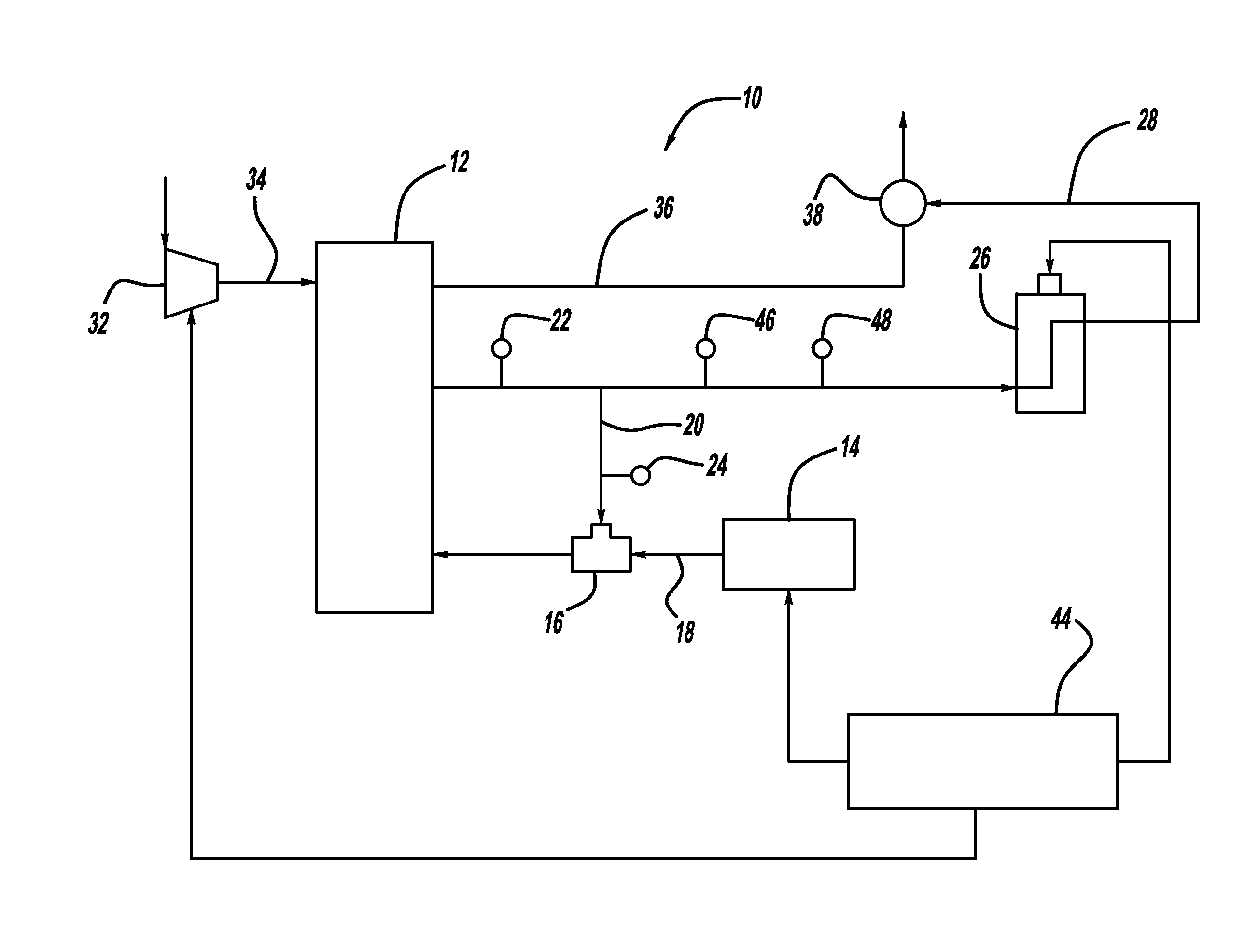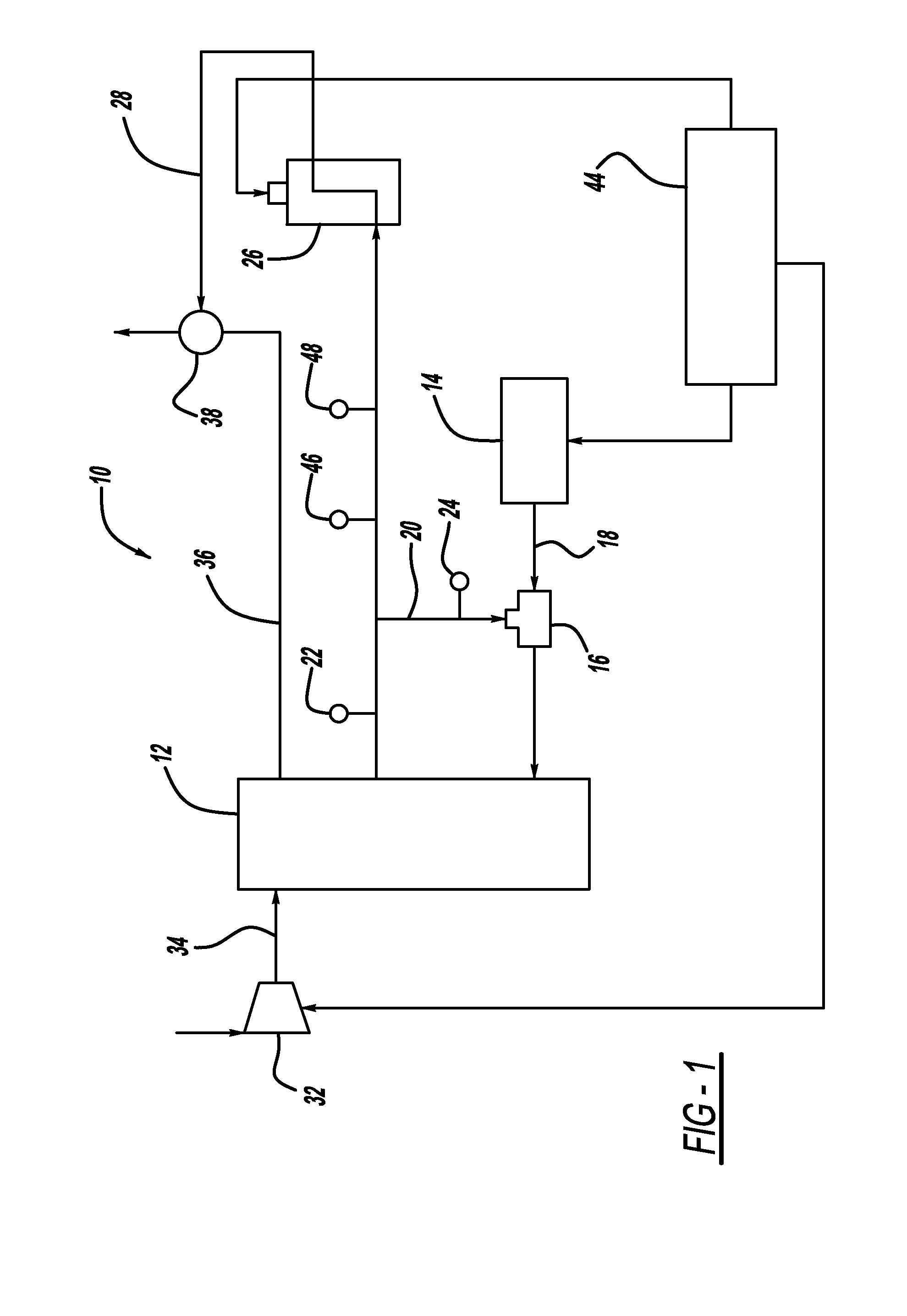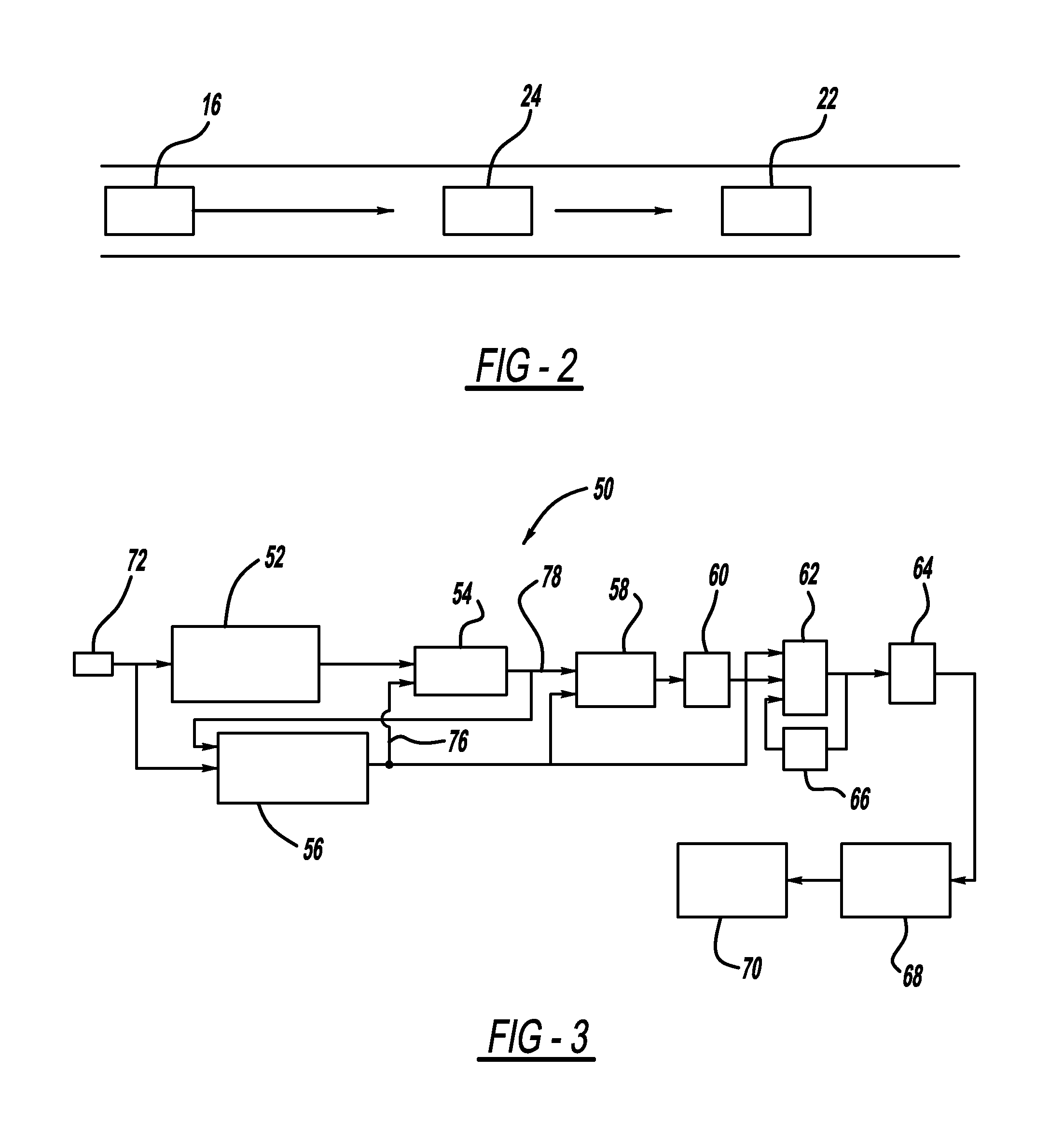Anode gas composition utilizing H2 injection pressure wave propagation rates
a technology of pressure wave propagation and anode gas, which is applied in the direction of electrochemical generators, electrical apparatus, fuel cells, etc., can solve the problems of unstable fuel cell stack, model estimation may contain errors, and relatively high manufacturing costs of meas
- Summary
- Abstract
- Description
- Claims
- Application Information
AI Technical Summary
Benefits of technology
Problems solved by technology
Method used
Image
Examples
Embodiment Construction
[0017]The following discussion of the embodiments of the invention directed to a system and method for determining the concentration of gases in an anode sub-system of a fuel cell system is merely exemplary in nature, and is in no way intended to limit the invention or its applications or uses.
[0018]FIG. 1 is a simplified block diagram of a fuel cell system 10 including a fuel cell stack 12. Hydrogen gas from a hydrogen source 14 is provided to the anode side of the fuel cell stack 12 on an anode input line 18 utilizing an injector 16, such as an injector / ejector, as described in U.S. Pat. No. 7,320,840 entitled, “Combination of Injector-Ejector for Fuel Cell Systems,” issued Jan. 22, 2008, assigned to the assignee of this application and incorporated herein by reference. An anode effluent gas provided at an output of the anode side of the stack 12 is routed back into the fuel cell stack 12 on an anode recirculation line 20. The anode input line 18, the injector 16, the anode side o...
PUM
| Property | Measurement | Unit |
|---|---|---|
| mean molar mass | aaaaa | aaaaa |
| molar gas constant | aaaaa | aaaaa |
| speed | aaaaa | aaaaa |
Abstract
Description
Claims
Application Information
 Login to View More
Login to View More - R&D
- Intellectual Property
- Life Sciences
- Materials
- Tech Scout
- Unparalleled Data Quality
- Higher Quality Content
- 60% Fewer Hallucinations
Browse by: Latest US Patents, China's latest patents, Technical Efficacy Thesaurus, Application Domain, Technology Topic, Popular Technical Reports.
© 2025 PatSnap. All rights reserved.Legal|Privacy policy|Modern Slavery Act Transparency Statement|Sitemap|About US| Contact US: help@patsnap.com



